Cooling has begun in the Pacific Ocean, with changes below the ocean surface indicating that a new La Niña is rising. Based on the latest data and the forecasts, a La Niña watch is issued, with the expected atmospheric impacts during the second half of the year and in the Winter of 2024/2025.
Ocean anomalies are a key part of the ocean-atmosphere climate system. And no other anomaly is as impactful as the ENSO warm/cold events in the Pacific Ocean, with the latest shift going into a new cold phase called La Niña.
We will first examine the latest cooling conditions across these ocean regions and their long-range development. Based on data from the past 40 years, you will also see the Weather impact that La Niña is likely to have on the 2024 Atlantic Hurricane Season and the next Winter of 2024/2025.
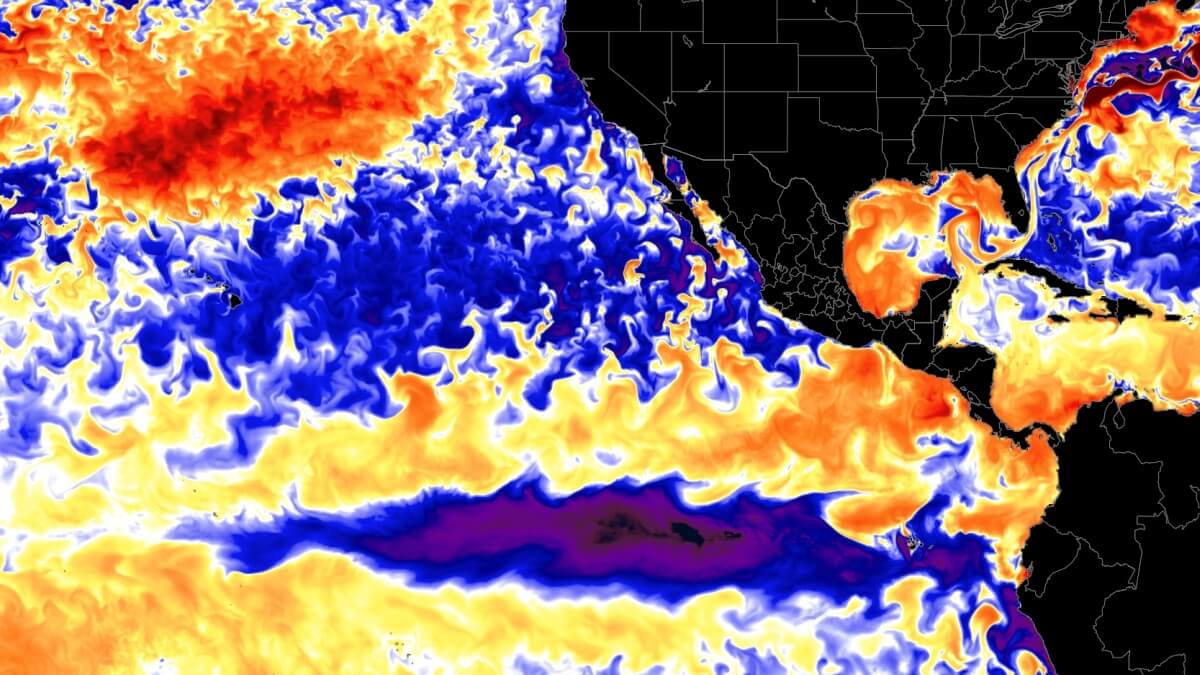
GLOBAL WEATHER SYSTEM
The most influential year-to-year ocean anomaly is found in the region called ENSO, which stands for “El Niño Southern Oscillation.” This is a region of the equatorial Pacific Ocean that periodically shifts between warm and cold phases.
ENSO has a significant influence on tropical rainfall, pressure patterns, and the complex relations between the ocean and the atmosphere. We typically observe large-scale pressure changes in the tropics with each new phase.
In the image below, you can see where the ENSO regions are across the tropical Pacific. Regions 3 and 4 cover the east and west tropical Pacific. The main area is Nino 3.4, which is where the main observations are focused.

Each ENSO phase influences the pressure and weather in the tropics differently. This affects the overall global circulation over time, changing the weather patterns worldwide.
The image below from NOAA Climate shows an example of the circulation during a cold ENSO phase (La Niña). It shows as an example how a certain state of ENSO impacts both the surface and upper circulation.
Descending air in the eastern Pacific causes high pressure and stable/dry weather. At the same time, the air rises in the western Pacific, causing frequent thunderstorms, low pressure, and heavy rainfall.
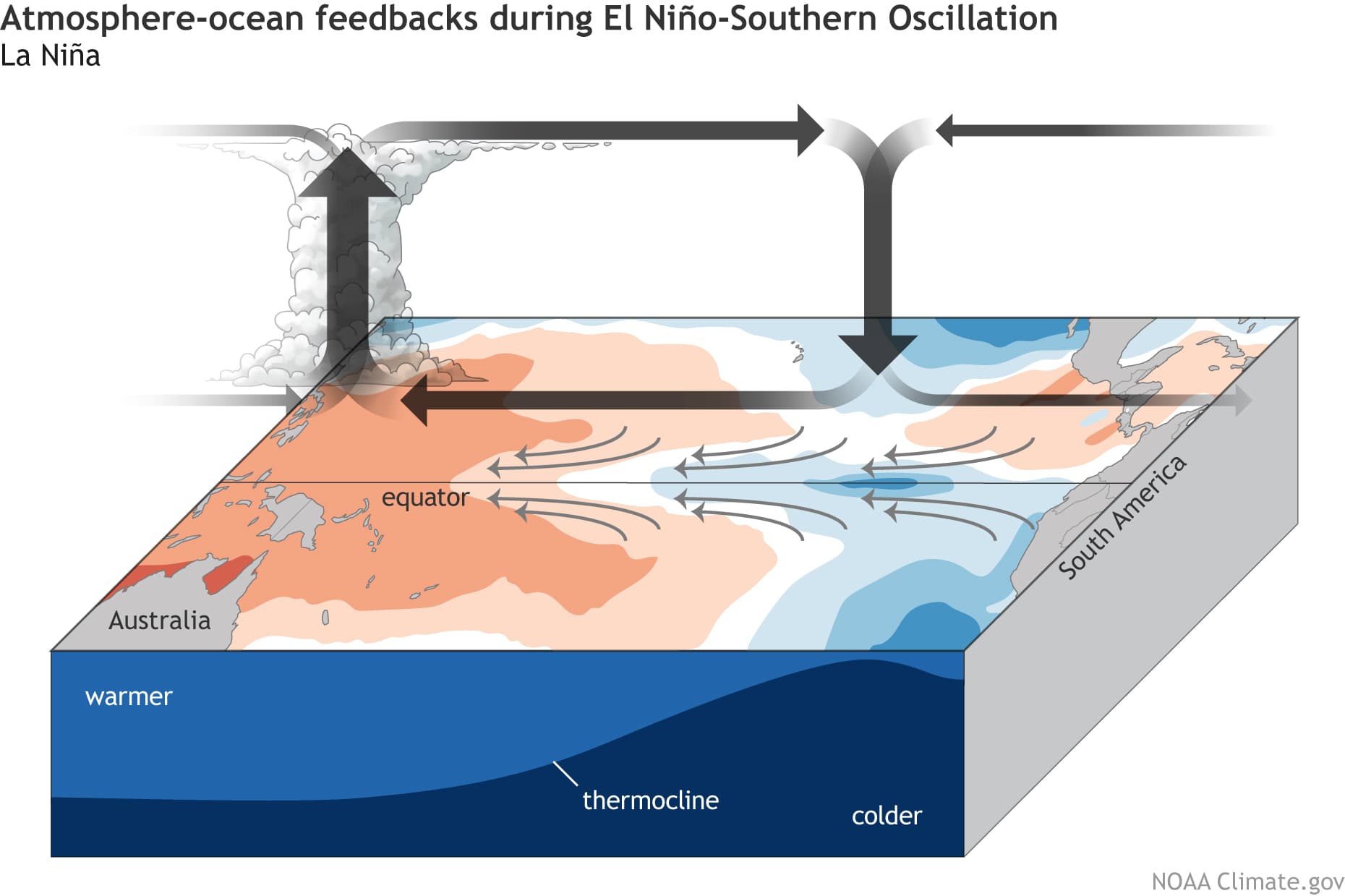
This way, ENSO strongly impacts the tropical rainfall and pressure patterns and thus impacts the ocean-atmosphere feedback system. Through this system, the ENSO influence is distributed globally.
Both ENSO phases have specific names. The cold phase is called La Niña, and the warm phase is called El Niño. Besides the temperatures, one of the main differences between the phases is the pressure patterns they produce, seen below as high (H) and low (L) pressure areas.

During an El Niño, like currently, the pressure over the tropical Pacific is lower, with more rainfall and clouds in this region.
But during a La Niña, the pressure over the equatorial Pacific is high, creating stable conditions and fewer clouds. These pressure changes translate into global circulation, affecting seasonal weather over both Hemispheres.
Below is the ENSO region anomaly data for the 2022-2024 period. Notice the rapid rise in ocean temperatures last year as the El Niño grew. The blue box is the last cold La Niña event, which occurred over the 2022/23 season.
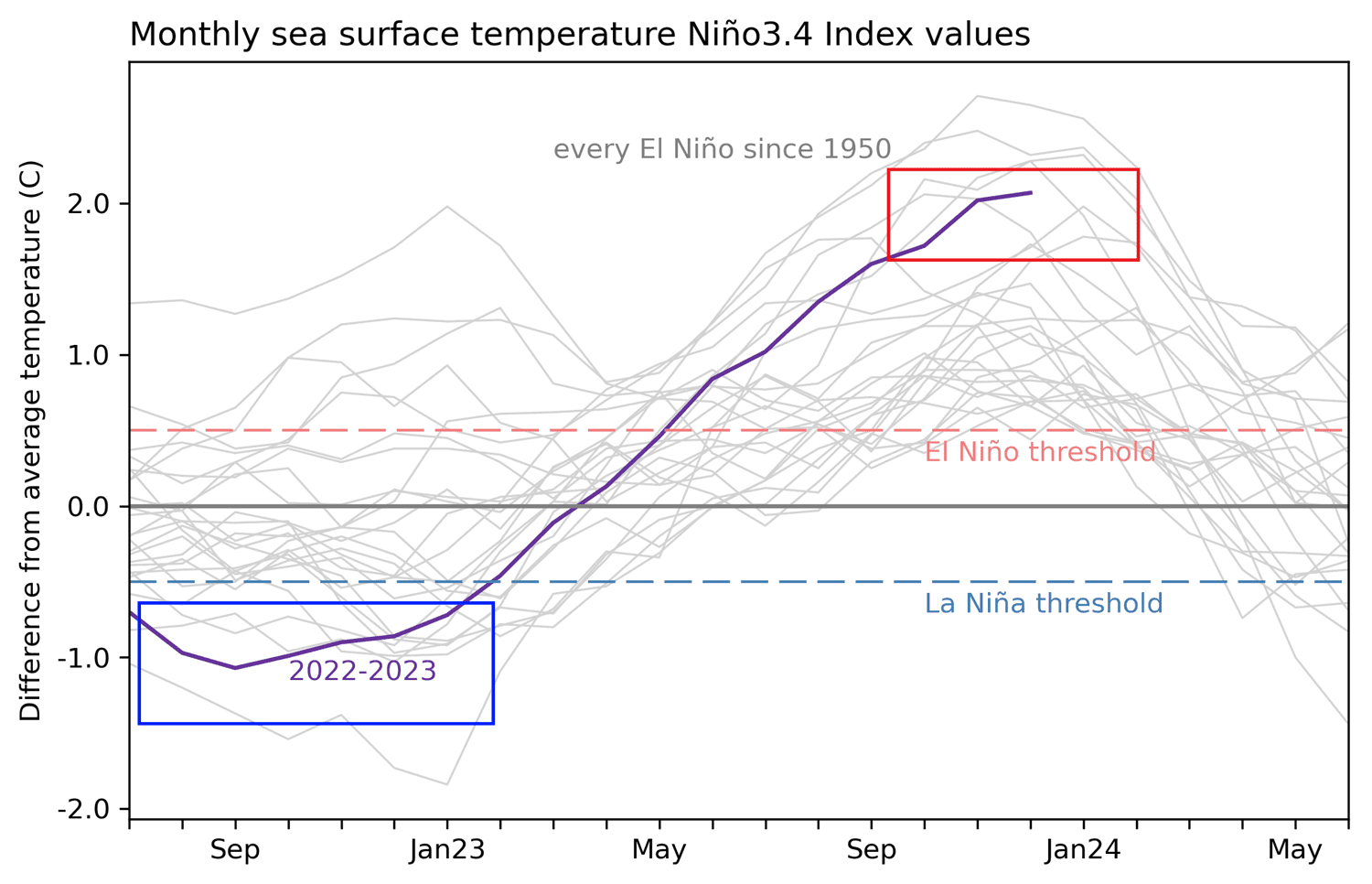
The red box shows the peak values of the warm El Niño phase in January. Gray lines are past El Niño events, which show that most El Niños in the past saw a rapid decline in the coming spring, similar to what we expect this year.
We can already see a very strong drop in ocean temperatures across the ENSO regions, with early signs that the La Niña is likely around the corner.
A NEW ANOMALY IS RISING
The graph below by NOAA Climate shows the more recent progress of ocean anomalies across the ENSO regions. Peak warm anomalies were recorded in December. But a rapid ocean temperature drop began early this year, with the whole region expected to turn into a negative cycle during summer.

This can be seen in the latest ocean surface temperature analysis below. You can see areas of colder temperatures emerging across the central and eastern ENSO regions.

The latest ocean anomaly below reveals the emerging cold ocean anomalies in the tropical Pacific. This is across the central and eastern ENSO regions and shows the first signs of the emerging La Niña. More cooling is expected in the coming weeks and months.

This process can be seen in the video below, showing the ocean temperature anomaly for the past two months. You can see the rapid cooling and the shift from the dominant warm anomalies to the emerging cold areas.
Below is the latest five-month ocean temperature anomaly change. You can very clearly see the cooling that has been ongoing across the entire ENSO region since early 2024. The strongest cooling is evident in the eastern ENSO regions, with a 4-6 degrees C below the normal seasonal change.

A strong cooling process also developed below the ocean surface. Below is the latest analysis of the ocean temperatures below the surface. You can see the cold anomalies are now at the surface in the eastern ENSO region and extending to around 100-150m (300-500ft) depth. Image by CPC.

A strong subsurface cold anomaly is the main precondition for developing a La Niña. With the aid of the trade winds and ocean currents, these subsurface anomalies move from west to east, eventually coming to the surface over the eastern Pacific, starting a La Niña event.
Below is the ocean heat content analysis graph for ENSO regions. It shows the heat anomaly in the upper ocean layers. You can see a strong, warm anomaly during the winter El Niño phase. But with the strong cold anomaly rising below the surface, the upper ocean heat anomaly began a rapid drop that started during winter.

We now know that the La Niña development is in full swing. But what do the actual forecast trends show, and what are the first weather impacts we can expect to see from the return of La Niña?
LATEST LA NINA FORECAST 2024/2025
The rapid subsurface temperature changes and the cold anomaly at the surface have prompted the Climate Prediction Center to issue an official La Niña watch. The latest outlook gives at least a 60% chance of a La Niña impacting the Winter season of 2024/2025.

In their latest discussion, they write: “A transition from El Niño to ENSO-neutral is likely by April-June 2024 (85% chance), with increasing odds of La Niña developing in June-August 2024 (60% chance)…”
This means the atmosphere will rapidly transition from one ENSO event to another. La Niña is expected to fully develop during Summer and exhibit its first weather impact as early as Fall 2024.
The NOAA official probabilistic ENSO forecast also shows this trend. The transition into a cold phase is unusually fast, with the probability of La Niña rapidly increasing for the June-August season. Based on the latest available data, it is also expected to impact the winter of 2024/2025.

Below is a long-range forecast from different modeling systems. It shows the ocean temperatures in this region rapidly dropping into negative territory. Most models agree with an emerging La Niña event, but its expected strength currently varies from a weak to a moderate event.

Below is the combined global ocean temperature anomaly forecast from 8 major global forecasting systems. The forecast period is late summer/early autumn. You can see a developed cold ocean anomaly in the ENSO regions. Also note the Atlantic Ocean, where we see strong, warm ocean anomalies.
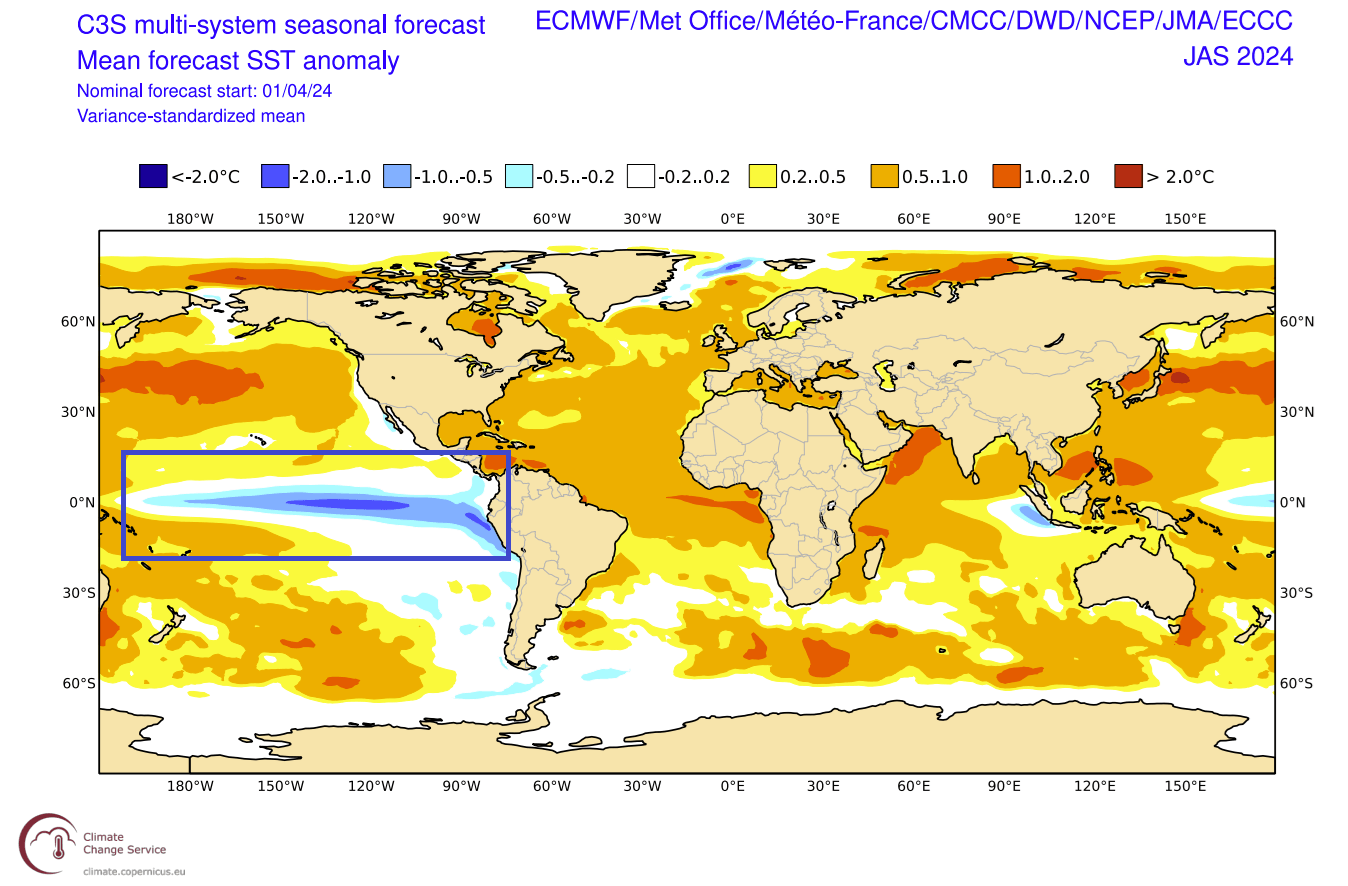
The ocean temperature forecast below is from another joint model forecast but from North America, the NMME. It shows the active La Niña emerging during summer. This is in agreement with other global forecasting solutions, already having a healthy cold event by the start of autumn.
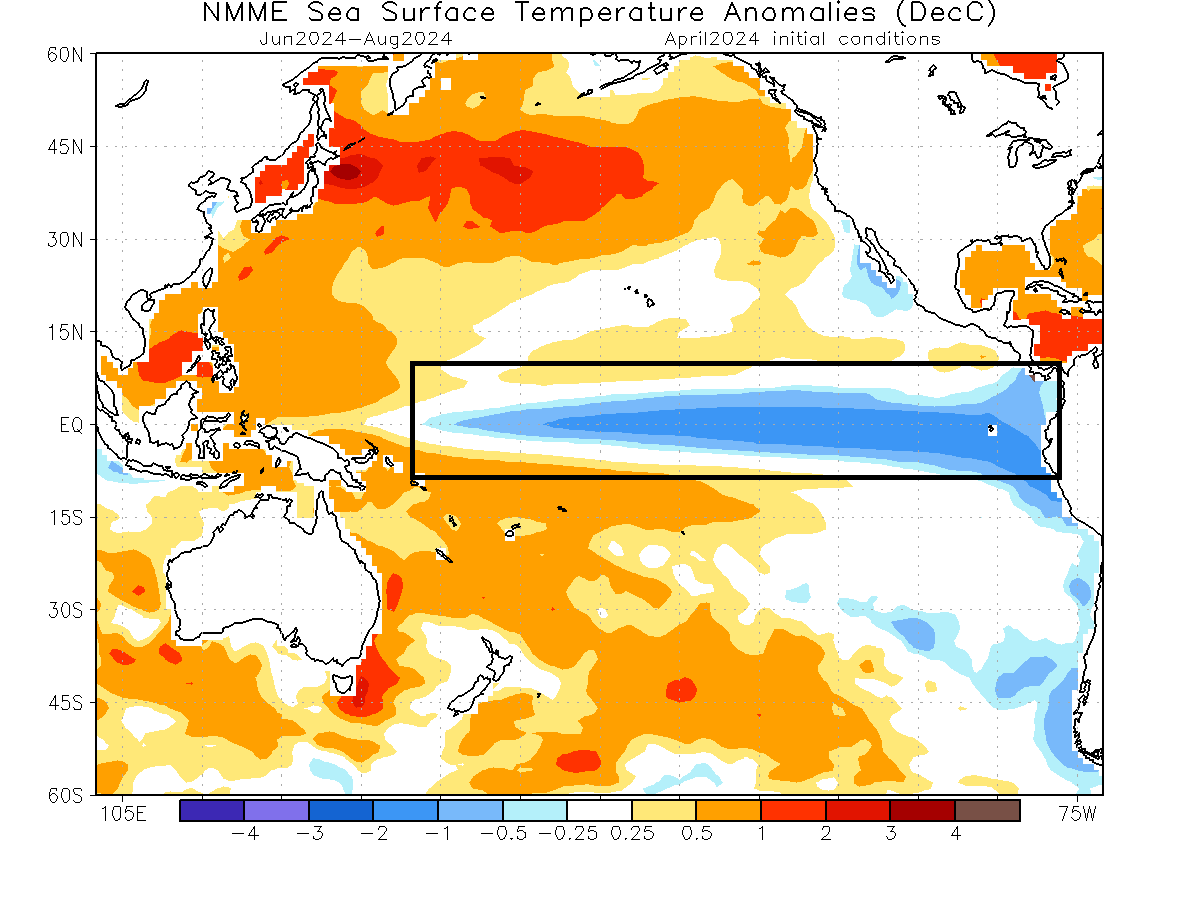
Looking below the ocean surface again, the next image shows the October ocean forecast from CFS. You can see a large and healthy cold pool below the surface across much of the tropical Pacific Ocean. This signals that La Niña will have a healthy core below the surface to push it through winter 2024/2025.

With the La Niña event starting in mid-to-late summer, we will likely see some atmospheric changes well before next winter. The first large influence could already be seen during the upcoming Atlantic hurricane season.
LARGE-SCALE WEATHER INFLUENCE
Because the La Niña anomaly greatly impacts the pressure and rainfall patterns in the tropics, it also has a very important impact on the Atlantic hurricane season.
Its influence on the hurricane season is well documented, providing specific atmospheric conditions that favor an active season.
The image below shows a typical influence of La Niña on the Atlantic hurricane season. The main effect is weaker upper-level winds over the main development region. This creates lower wind shear over the tropical Atlantic, which means that tropical systems are much more free to strengthen and last longer.

Lower shear also means the tropical systems can organize more rapidly and have less interference to power up. Combined with warmer-than-usual oceans for more energy, it supports easier development and stronger tropical systems.
We can track the expected activity by looking at the precipitation forecast from the North American NMME forecasting system. It does not tell us the number of tropical systems, but it can show us where tropical systems are more likely to pass over.

You can see a very obvious trail of more precipitation across the tropical Atlantic, extending into the Gulf of Mexico, across Florida, and into the southeastern United States. This signals more tropical systems with favorable conditions to support strengthening and longevity.
The latest ocean temperature forecast from the NMME shows cold anomalies of the La Niña event in the Pacific. But in the Atlantic Ocean, the forecast shows much warmer than normal surface temperatures.

An active cold ENSO phase means less wind shear and more atmospheric instability over the Atlantic development region. Combined with above-normal ocean temperatures, this is a perfect scenario for a strong and active hurricane season.
We will release a more detailed look at the hurricane season in the near future when more data and forecasts are available. But early signs point towards a very active season.
But the next major weather influence of the La Niña is usually during winter.
COLD ENSO EVENT AND WINTER WEATHER
We are in the first months of the year, so no long-range forecast is available for the 2024/2025 winter. But, we can look at the past data and find years with a similar rapid shift from a warm to cold ENSO phase. It can give us an idea of what it means for the next winter.
Usually, the first weather influence of these ocean anomalies can be seen in the changing jet stream. The jet stream is a large and powerful stream of air (wind) at around 8-11km (5-7mi) altitude.
The most typical effect of a cold ENSO phase is a strong blocking high-pressure system in the North Pacific. That usually redirects the polar jet stream down into the northern United States.
The image below shows the jet stream repositioning during La Niña winters. It also shows the resulting weather patterns over the United States and Canada.

A La Niña winter brings lower pressure and colder temperatures from the polar regions into the northern and northwestern United States. It also brings warmer and drier weather to the southern parts.
Cold events are more frequent in the northern United States and southern Canada. There is also more precipitation, as the jet stream directs the low-pressure systems that way.
Such a weather pattern can often lock out the southern United States, creating warmer and more stable winter weather with less snow and cold fronts.
In the image below shows, you can see the average pressure pattern during La Niña winters over the past 40 years. You can see a strong high-pressure system in the North Pacific and a low-pressure area over Canada and the northern United States. Europe also shows lower pressure than normal across the central and southern parts.
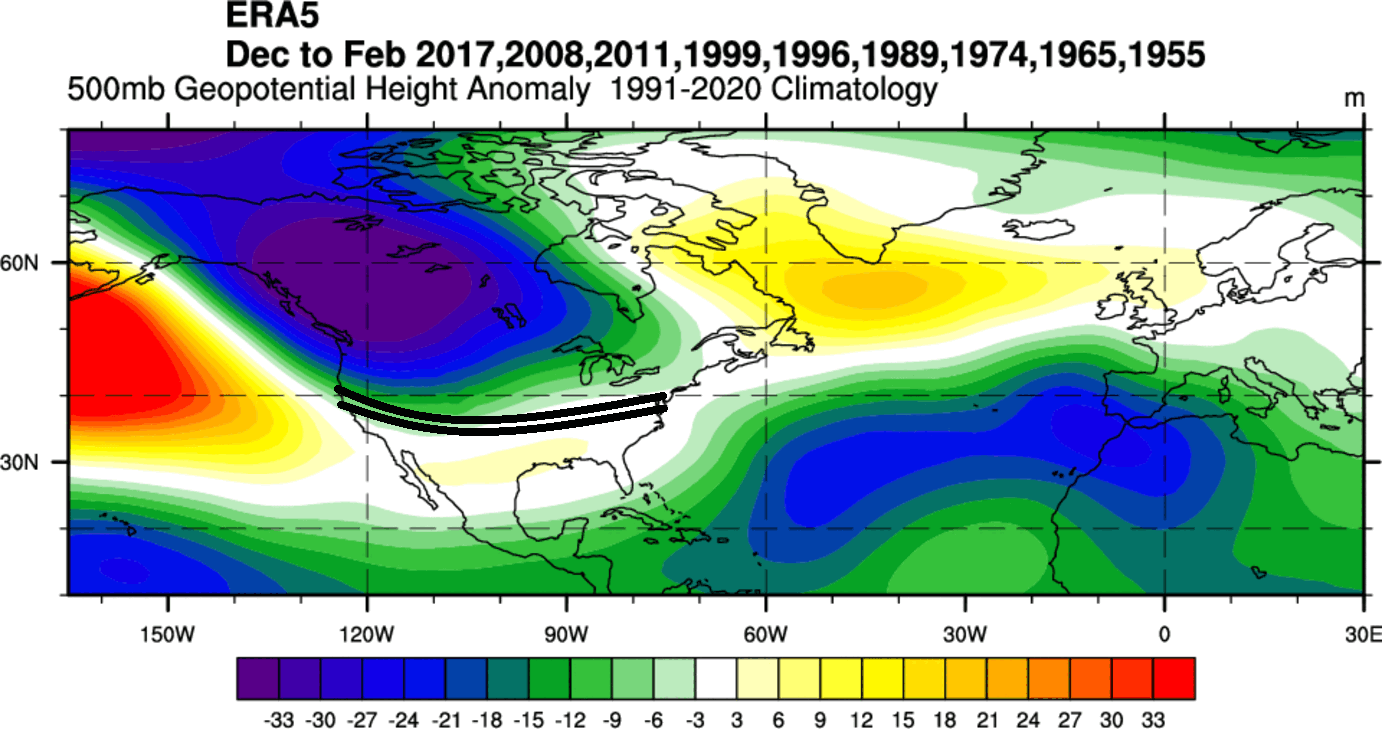
A strong high-pressure system in the North Pacific starts the development of a low-pressure region over Alaska and western Canada. That curves the jet stream downwards between the two pressure systems, marked by the double lines.
Looking at the temperature pattern for the same winters as above, we can see the cold anomaly under the low-pressure areas over western Canada and the northwestern United States. A cooler area extends over the Midwest, parts of the central United States, and over Europe. Image by NOAA Physical Sciences Laboratory (PSL).
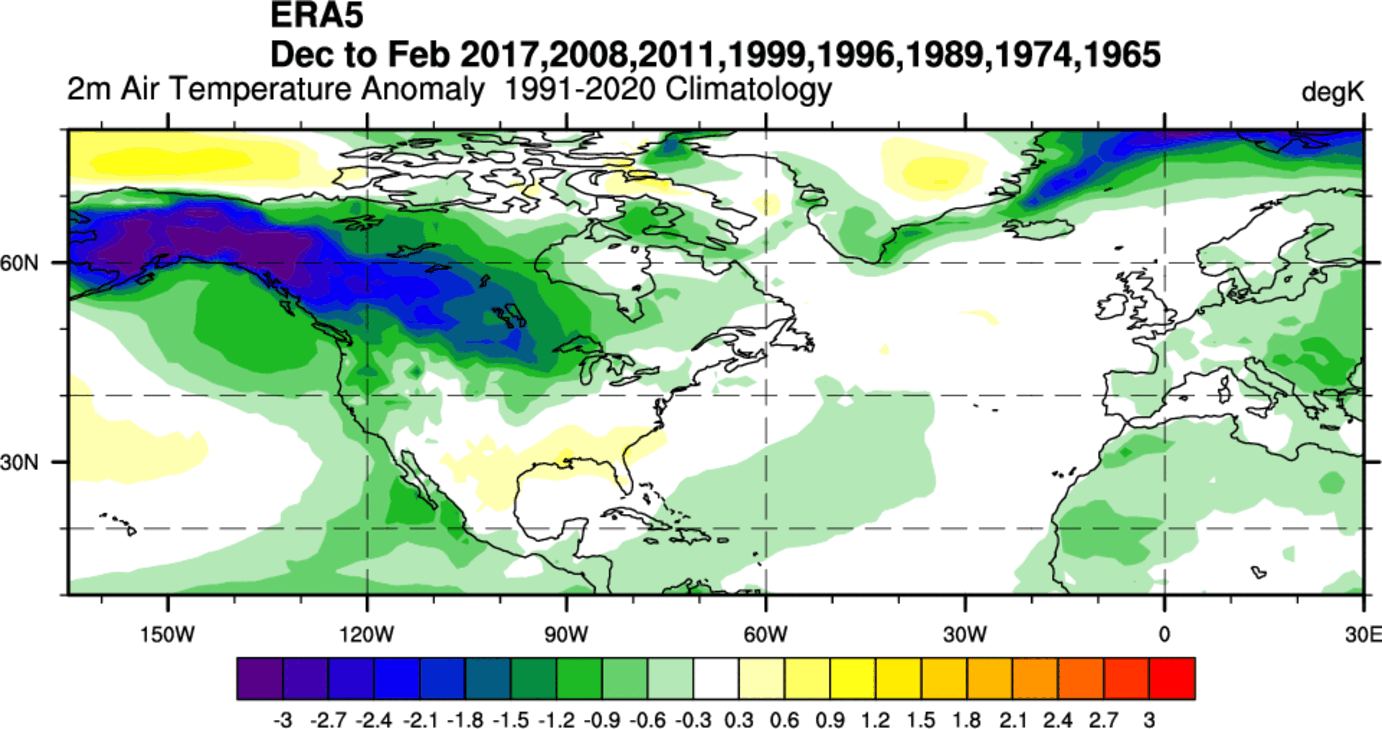
Warmer-than-normal winters and mild weather conditions typically occur over the southern and eastern United States. The main winter weather dynamics are usually found in the Midwest and the central United States.
La Niña winters are usually drier than normal over the southern and southeastern United States. This is because La Niña produces a weaker subtropical jet stream and less moisture for the southern and the eastern parts of the United States. More precipitation is typically found over the northwestern United States, the Great Lakes, and parts of the northeastern United States.
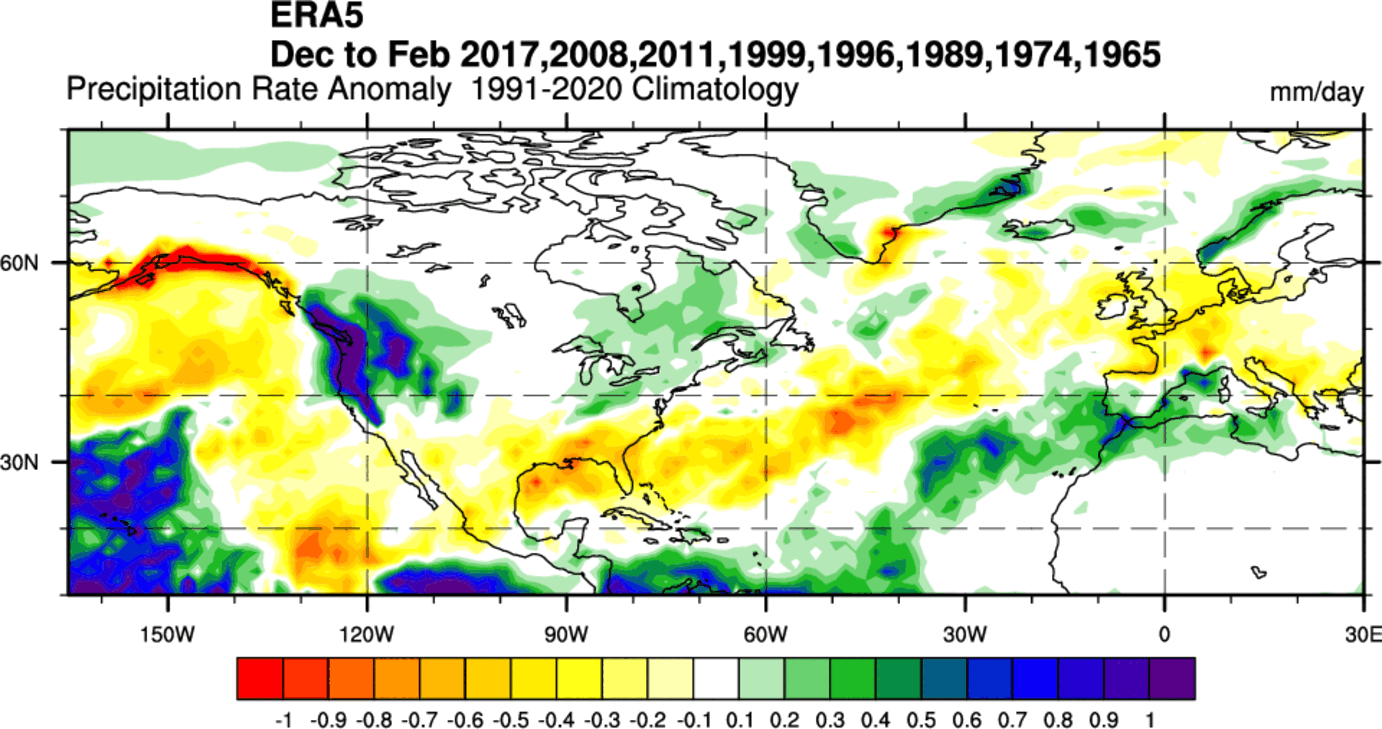
How about snowfall? Past data shows that the jet stream from La Niña also has an important effect on the snowfall potential over North America, as the pressure systems take a different path.
Colder air is more easily accessible to the northern United States, which increases the snowfall potential when moisture is available. The graphic below by NOAA-Climate shows the average snowfall pattern for La Niña Winters, as is expected for the 2024/2025 season.

You can see increased snowfall potential over the northwestern United States and the Midwest and over parts of the northeastern United States and eastern Canada.
This data is based on past La Niña events. No two such events are completely the same, but it shows that these ocean anomalies can profoundly influence weather patterns, and the 2024/25 weather season will likely be no exception.
We will keep you updated on the global weather development and long-range outlooks, so make sure to bookmark our page. Also, if you have seen this article in the Google App (Discover) feed, click the like button to see more of our forecasts and our latest articles on weather and nature in general.
See more:
Summer 2024 Forecast Update: Under the Atmospheric impact of the shift from El Niño to La Niña